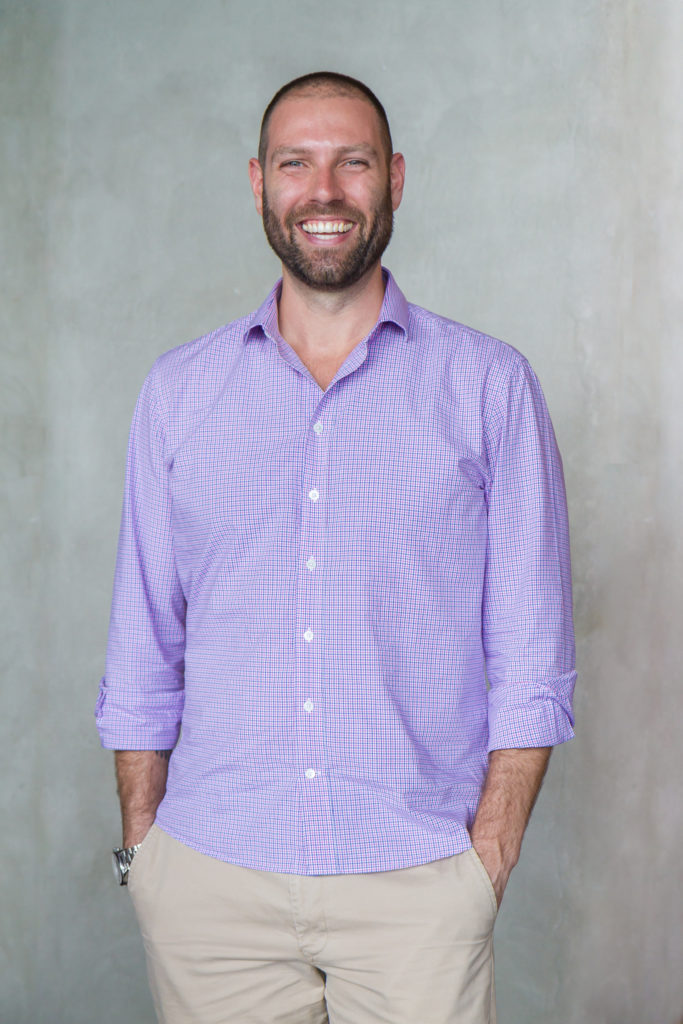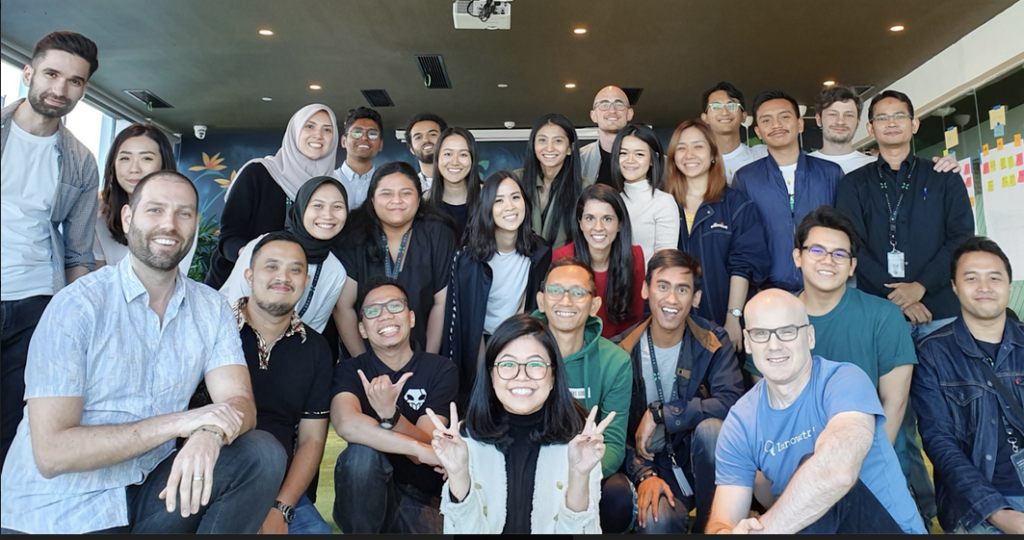The vast majority of startups fail. This is a fact that every startup’s founder and employee must recognize. However, no entrepreneur sets out intending to fail, and Drew Calin certainly didn’t want that when he left LinkedIn after a decade to form his own co-working space company, Greenhouse.
The California native had big dreams for his company, which launched in 2017 in Indonesia. “People work in concrete jungles in these fast-growth markets in Asia, and we know what having an office culture can do for a workforce,” he told KrASIA.
The company acquired its first space in Jakarta in February 2018. It didn’t take long for the founding team to realize that many of their customers were using co-working spaces to connect with other trustworthy corporate services. For new entrants in emerging markets such as Indonesia and the Philippines, setting up a business was a logistical nightmare ridden with mistrust, Calin explained.
Calin started considering the business potential of matching entrepreneurs with designers, developers, lawyers, accountants, and other service providers, as the nature of Greenhouse’s co-working community provided the perfect setting for this line of service.
From the third quarter of 2019 onwards, the company carried out market research and a series of interviews with suppliers and vendors to estimate the business viability of playing matchmaker for startups. When the COVID-19 pandemic became reality, Calin decided to make the pivot.

A necessary metamorphosis
“Q1 2020 was our best quarter, ironically. But once COVID hit Singapore, we knew that it was going to be really problematic for us to hold on to so many big spaces in the middle of cities across Asia. We needed to make a decision, and we had to get rid of our co-working business as quickly as possible,” Calin said.
Greenhouse decided to scrap its co-working business completely and transform its firm into a marketplace that connects corporate services with companies looking to enter Asia. The company retained its name to reflect its vision of being a catalyst for fast-growth businesses entering fast-growth markets.
Investors also supported Calin’s business decision. “Our investors invested in Greenhouse when we were developing co-working spaces, yet, they continued to support us even after.” The pivot carried urgency. An investor urged Calin’s team to abandon their original plans for 2020 and rebuild from the ground up.
“What was interesting was the degree to which investors wanted to see us save money because everyone understood the challenges of co-working spaces,” said Calin. “Continuing in the co-working industry meant having to pay rent for really big spaces in the middle of the city. We had originally held onto our real estate with the intention of selling or chopping it up. But by February, there was a real pressure to amputate it as fast as possible,” he added.
All hands on deck
Pivoting quickly came at a heavy cost, Calin explained. One of the first things he had to do was to restructure his team for the company to survive. He had to make difficult decisions.
“We had a full staff of receptionists, food and beverage employees, and so on. We had to let them go, all of them—about 60% of our workforce. The layoffs and the pivoting were intertwined, and it is really hard when you let go good people who don’t deserve it,” he said.
There is no book that can adequately prepare founders to lay off a team member, especially when it is done online during a global pandemic. “The most unfortunate mistake is underestimating the emotion and humanity tied to business-oriented decisions,” Calin said.
Faced with this unenviable task, Calin sought counsel from his peers. “A fellow startup founder insisted I should connect with other founders to learn what challenges they faced and how they addressed them. I scheduled a series of meetings with founders of all walks, whose discussions and inputs helped to shape our approach through the layoffs and pivot.”
Another mentor who worked as human resources executive told Calin that to be humane, he had to cut as deeply and quickly as possible, as nothing would be more demoralizing than a second round of layoffs.
“It’s really easy to let everyone mope, have emotions sog and linger. But it was important for us to get back to a state of normalcy as quickly as possible. We gave everyone a day off on Tuesday, but on Wednesday, we came back. It was a new week and we had to move on.”
Prior to announcing the layoff, the company prepared letters of recommendation to cushion the blow, Calin said. Meanwhile, Viktor Kyosev, Greenhouse’s chief operating officer, contacted about 50 companies across the region to seek new opportunities for Greenhouse’s employees who were about to lose their jobs.
“On the morning of the layoff, we started with an all-hands and a direct message that we would be having conversations with everyone,” said Calin. In one-on-one meetings, the people about to lose their jobs were told that they would receive recommendations from management, interview training, job search support, and fair severance pay. “If possible, we tried to ensure that they had a job in the pipeline. The day was very painful.” Since then, all of the office staff who were retrenched have found employment. Still, the F&B industry remains fraught with difficulty.

Moving onward and upward
The staff restructuring gave the company financial safety to weather the worst of the pandemic, Calin said. “We decreased our burn rate by about 45%, not just through layoffs, but by asking everyone to take a pay cut, cutting back on marketing and variable costs.”
Layoffs were only the first step of financial prudence, with the overall business strategy also falling in line. “We had to be creative about how to operate and where we could monetize outside of our marketplace, and how to maintain our sense of direction when the world was closed.”
Greenhouse’s platform currently matches market incorporation services with companies looking to enter emerging markets. To do this, the startup tried to understand the challenges its partners and suppliers faced during the pandemic, noting that they struggled to source new customers and leads. Greenhouse then co-created massive amounts of content at no cost to their partners, generating digital exposure and qualified leads for many of their suppliers.
“None of this activity was on our roadmap for 2020, but gave us the ability to create immediate and unforeseen value for our network. It also goes a long way to relationship-building and generating good will in a down year,” said Calin.
Another new business line for Greenhouse taps the company’s strong connections to accelerator programs. “We discovered that many of our accelerator partners work with startups who are exploring new markets across Asia. This process requires research, business matching, and even demand generation activities—all before deciding to invest in launching a new entity,” said Calin. “However, this is an extremely muddy process and services segment, so we got involved, and built a network of market research and validation service providers too.”
The move paid off. For Greenhouse, this service accounts for more than 60% of their revenue and 74% of repeat customers in the fourth quarter of 2020.
After trimming more than half of its staff, Greenhouse is bouncing back, with Q4 revenues at nearly at the same level as those of the first three months of the year, Calin said. The firm’s new business is flourishing, with transaction volumes up by 237% from the previous year. The company now counts over 100 partners across 40 service industries, with several key customers originating from its new accelerator program and many partners.
Still, the path ahead remains riddled with challenges. “When pivoting, there is a growth process that follows. You rarely pivot into a gold mine. Usually, it is a giant mountain instead,” said Calin.
Greenhouse had an aggressive roadmap and originally planned to launch several software features to complement its marketplace in 2020, but strained financial circumstances during the pandemic forced them to rethink what was most important for their customers. “We pushed the software releases back to the second half of 2021,” said Calin.
“When we started a co-working business, we were about creating a community for people to feel included, and Greenhouse was the name chosen to help companies grow organically in our co-working space. We didn’t have ping pong, but yoga and meditation, and we didn’t want any plastic in the office. We planted a tree for every customer,” Calin said. “Even as a re-formed tech company, we have retained our ethos and want to help companies expand across Asia sustainably.”


